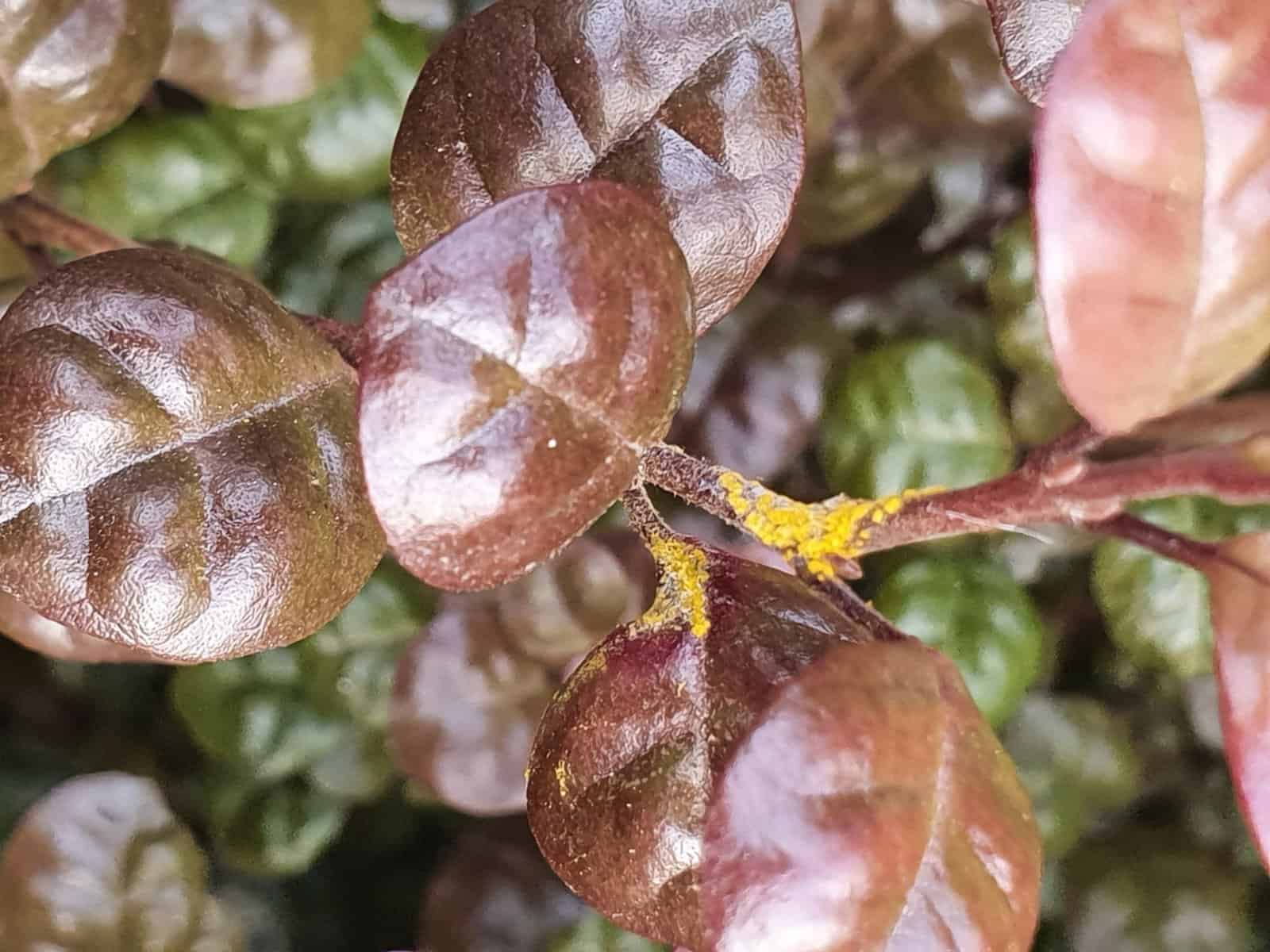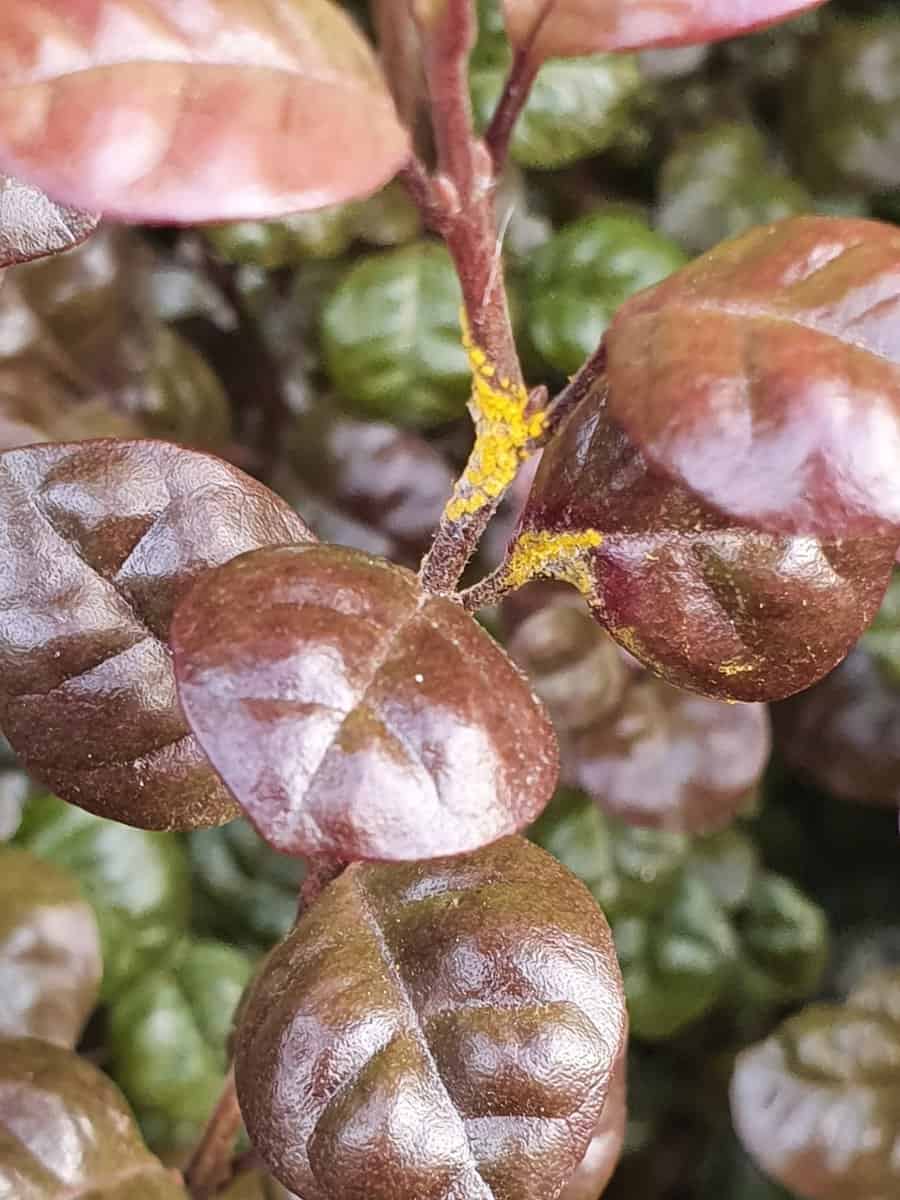By Beyond Myrtle Rust
A find of myrtle rust on a hedge in residential Christchurch marks the first report of the deadly disease on a host that was not newly planted in the region. This suggests the weather was conducive to infection at some point during the preceding weeks. We are likely to see more of the disease in the area as spore numbers increase locally and in adjacent regions.
The finding was made in late April by David Havell, a technical advisor for DOC.
“I keep an eye out for myrtle rust when I am out and about,” says David.
David, who has been following the trajectory of myrtle rust since it was first found in New Zealand in 2017 and was involved in identifying the first (and northern-most) find on Raoul Island, came across a hedge of the Lophomyrtus cultivar while he was out walking. Knowing Lophomyrtus to be particularly susceptible to myrtle rust, he took a closer look and found clear signs of infection. Tiny yellow pustules (structures containing spores) were present on new leaves and the disease was also on parts of the stem.
“It looks like the infection was quite recent,” says David. In his experience, plants that have sustained prolonged infection often present with dead stems. In this case, only the leaves had sustained damage, although there were pustules on some of the stems.

This is not the first time that myrtle rust, caused by the fungus Austropuccinia psidii, has been found in Christchurch. However, previous findings were from plants purchased in nurseries in other regions and relocated to the area. Compared to northern regions, Christchurch is considered a low-risk environment for myrtle rust, which thrives in warm, moist environments.
Nevertheless, when Robert Beresford and Rebecca Campbell, researchers from Plant & Food Research, conducted a weather risk analysis for Christchurch for the months preceding the report they found conditions in the area were suitable on some occasions during recent months.
“Weather conditions were favourable for myrtle infection on 25 individual days during summer and early autumn with a period of particularly high risk in late February and early March,” says Robert.
The weather conditions in this period were similar to the previous year when local spread of rust was not observed. Robert suspects that a slow build-up of undetected spores over many months paired with periods of favourable weather resulted in the appearance of the disease.
“Rust is likely to be establishing in Christchurch and can be expected to be seen more often from now on,” says Robert.
Environment Canterbury were quick to deploy biosecurity officers to confirm the finding. They conducted a local search for susceptible plants, door-to-door surveys of surrounding houses, and a mail drop of informational pamphlets.
“We haven’t turned up any additional infections,” says Laurence Smith, Principal biosecurity advisor at Environment Canterbury. “We plan to have another survey, starting from late spring, when myrtle rust is more active.”
So far, no action has been taken to remove or treat the infected hedge.
“Myrtle rust is not in Environment Canterbury’s plan,” says Laurence. “We’ll be working in collaboration with local and national government to decide what the next steps will be.”
In the meantime, Laurence asks that the public please report any findings of myrtle rust on iNaturalist.
“We’d like to know where this infection came from and if there are any more infections out there,” he says.
If you think you’ve seen myrtle rust, please report your discovery on iNaturalist.
For more information about myrtle rust, please see our FAQ or https://www.myrtlerust.org.nz/
For the latest on research, check out the Beyond Myrtle Rust research programme and the Ngā Rākau Taketake research programme.
For more information, contact Renee Johansen , project manager for the Beyond Myrtle Rust Programme, hosted by Manaaki Whenua – Landcare Research.
